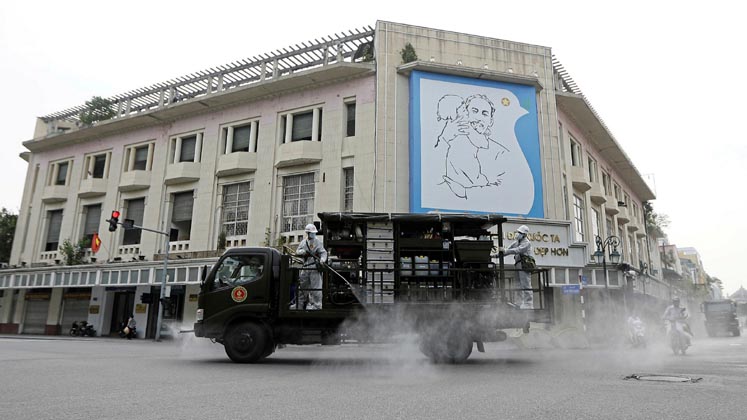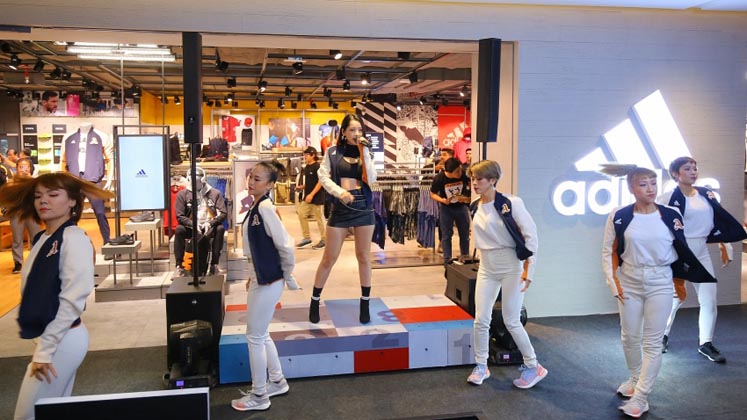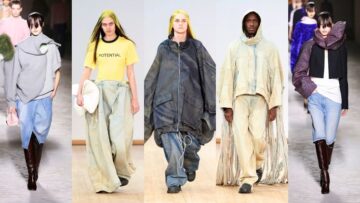
Vietnam has always stood out amongst its apparel manufacturing competitors for its quality, productivity, skilled manpower and discipline. Even when the world was battling the pandemic in 2020, Vietnam continued to be one of the most resilient economies in the Asia-Pacific region. There were very few Coronavirus cases in the country and it seemed this country could never go wrong. Strong economic recovery continued in the first half of 2021 too, with GDP in the second quarter of 2021 going up by a good 6.6 per cent year-on-year.
However, scenario started changing for the worst since May this year, with new cases picking up fast and vaccination process slowing down. It was clear by now that Vietnam was falling to the fast-rising pandemic wave. Therefore, it wasn’t surprising to see more than one-third of country’s apparel and textile industry struggling to survive in last few months.
Further on the same, a worried Vu Duc Giang, Chairman, Vietnam Textile and Apparel Association (VITAS), said that 30 per cent to 35 per cent of country’s apparel and footwear factories have had to suspend operations owing to the pandemic. While speaking at a virtual meeting in the first week of August, the Chairman averred that many factories, especially small and medium enterprises, will have to shut down for a longer period of time.
Notably, as per the data presented by VITAS, the export numbers of Vietnam’s apparel and textile sector touched US $ 18.7 billion in the first six months of 2021, and in the current scenario, the annual target of US $ 39 billion looks quite distant. If at all everything improves all of a sudden and business starts exporting again, then also, many experts believe, industry might achieve just somewhere around US $ 31 billion.
Companies today do not have enough money to pay for three-on-site working arrangements to help workers return to work, and if this continues, then it will be an arduous task for the country to stabilise the apparel, textile and footwear firms. Around 90 per cent of supply chains in Vietnam’s apparel and textile industry are broken and that’s enough to send shocking waves amongst fashion retailers across the globe.
Retailers are indeed a worried lot as supply chain disruption has put huge pressure on many textile and apparel companies in the country. Besides lack of money, many garment workers are leaving for their hometowns, and with uncertainty always hovering around their return to the city and the factories, it might become a big challenge for the industry in the near future. With the pressure of a seasonal manufacturing industry where timeliness is critical, any delay in delivery is enough to make customers cancel orders.
Simply put, any delay means that sweatshirts, suits, jackets or shoes may not reach store shelves by the Thanksgiving Day or Black Friday. To win the trust of retailers, Vietnam needs to control the pandemic by the third quarter and ensure that business activities return to normal. There are now two ways about it. One solution is to keep garment workers in large industrial zones safe and get them vaccinated as early as possible.
Yes, Vietnam today has several orders for apparels and shoes, but the delivery time is so tight that any slight delay would incur penalties on apparel factories. Ho Chi Minh City’s Forecast and Labour Market Information (FALMI) Centre has predicted that the city will require more than 9,000 workers for garment and footwear manufacturing by the end of 2021 to meet the orders – and that too if the pandemic is controlled and restrictions are eased.
Nike supplier stops production at three plants
American apparel and shoe giant Nike is worried as production has shut down at footwear manufacturing units in Vietnam. As per media reports, the company has had to use airfreight to get its products out of Vietnam as quickly as possible amidst shipping crisis. Sadly, the situation isn’t going to improve in the coming weeks as flow of cargo through Vietnamese ports will increase

Worried over factory shutdown, Cuong Luong, Sustainability Manager, Nike Vietnam, says that Nike has around 200 suppliers in Vietnam which include apparels, fashion accessories, finished goods and footwear, with its labour-intensive suppliers employing around 500,000 workers. Cuong added, “Nike manages our suppliers across the country. Some factories in the northern provinces of Bac Giang and Bac Ninh have faced serious impacts over the past few months, and now the pandemic has hit suppliers in Ho Chi Minh City, and nearby provinces of Binh Duong, Dong Nai and Long An.” Nike remains one of the largest indirect foreign employers in Vietnam.
Taiwan’s Pou Chen Corp, which makes products for companies Nike and adidas, too recently suspended operations at its plant in Ho Chi Minh City after 49 infections were detected at this plant. Ho Chi Minh City is currently Vietnam’s epicentre, accounting for 64 per cent of the country’s total infections.
Sportswear giant adidas feels the heat!
Like Nike, the German sportswear retailer is also disturbed and it has valid reasons for the same. The retailer has said that factory closures in Vietnam – all owing to rapid emergence of the pandemic – could cost it a worrying sales loss of € 500 million. This was announced by the retailer in the first week of August.

The German sportswear giant gets a large portion of its stock from Vietnam’s suppliers and shutting down of its plants, including that of Pou Chen Corp, could hit the retailer significantly in 2021. Notably, the estimated loss of € 500 million is 2 per cent of sales forecast made by the retailer in 2021.
Also Read: Sportswear giant adidas’ sales to miss out on € 500 million; hit by factory closures in Vietnam
Under Armour too is worried….
Like Nike and adidas, the pandemic is lingering across Under Armour’s supply chain too. It’s indeed a worry when around one-third of the brand’s apparel and footwear products is sourced from Vietnam.
More on this Patrik Frisk, CEO, Under Armour, said, “Currently, we have experienced some things happening already from Vietnam in terms of impact not just on the actual manufacturing, but also to the logistics and some port congestion and container availability.” He added, “We’re monitoring it, and as you know, it’s a very fluid situation right now in terms of what’s currently going on and how that thing is spreading.”
Conforming to Patrik’s thoughts, Chief Financial Officer David Bergmann confirmed that Under Armour was already witnessing some delays due to the general supply chain pressures, which could lead to some cancellations here and there and other pressure points.
Under Armour didn’t disclose much on how much longer lead times out of Southeast Asia had become, but Patrik spoke about the brand’s well-balanced sourcing platform across Europe, the Middle East, South America and Latin America that was helping it stand in a better position than others.
Notably, inventories have fallen by 26.5 per cent on a year-over-year basis to US $ 881 million from US $ 1.2 billion. David Bergman said that the effect of the demand constraints, which started last year as part of the exit of non-premium wholesale partners, could be huge in the second half of 2021.
Even home decor manufacturer Ching Feng Home Fashions Co., Ltd., which produces curtains for Walmart and Ikea, has also, reportedly, stopped operations at its factories in Binh Duong temporarily. It’s not good time to be here for anyone from workers and suppliers to retailers.
Strict physical distancing measures, contact tracing and community adherence were the major reasons why Vietnam was able to successfully battle the pandemic last year. If the Government continues to resort to same practices coupled with speeding up the vaccination process and restricting the movement of people, there is no reason why Vietnam shouldn’t succeed in 2021 as well. It has done it before and it can do it again to ensure unbroken supply chains in Vietnam’s apparel and textile sector so as to continue leveraging the existing global situation and drive economic development in the country.
Also Read: How Vietnam surpassed Bangladesh in apparel exports






